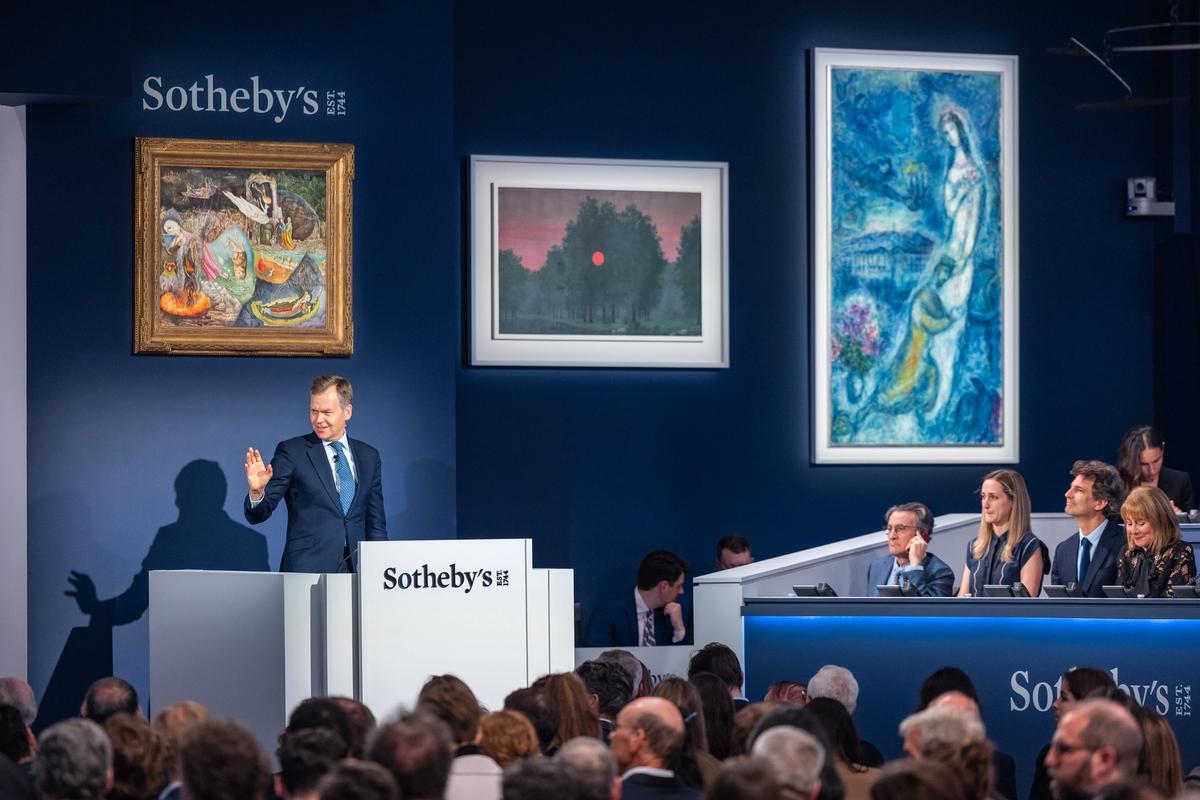Breaking through the gloom and doom of a softening market, Sotheby’s Modern evening sale delivered a robust $198.1m ($235.1m with fees) on Wednesday (15 May). The tally landed the auction midway between its pre-sale expectations of $180.2m to $250.7m (calculated without fees).
Only two of the 50 lots offered went unsold, for a muscular sell-through rate of 96%—that is, not counting a pair of withdrawn lots, whose absence sapped an estimated $3.5m to $5.5m from the potential result.
Thirty-two of the 48 lots that sold (around two-thirds by volume) came backed by financial guarantees from Sotheby’s, third parties or a combination of the two. One artist record was set, courtesy of Leonora Carrington’s much-anticipated Les Distractions de Dagobert (1945).
This evening’s final tally trailed that of the equivalent sale at Sotheby's in May 2023, when bids generated $258.1m ($303.1m with fees) for the 40 lots sold, led by Gustav Klimt’s Insel im Attersee (around 1901-02), which fetched $46m ($53.2m with fees).
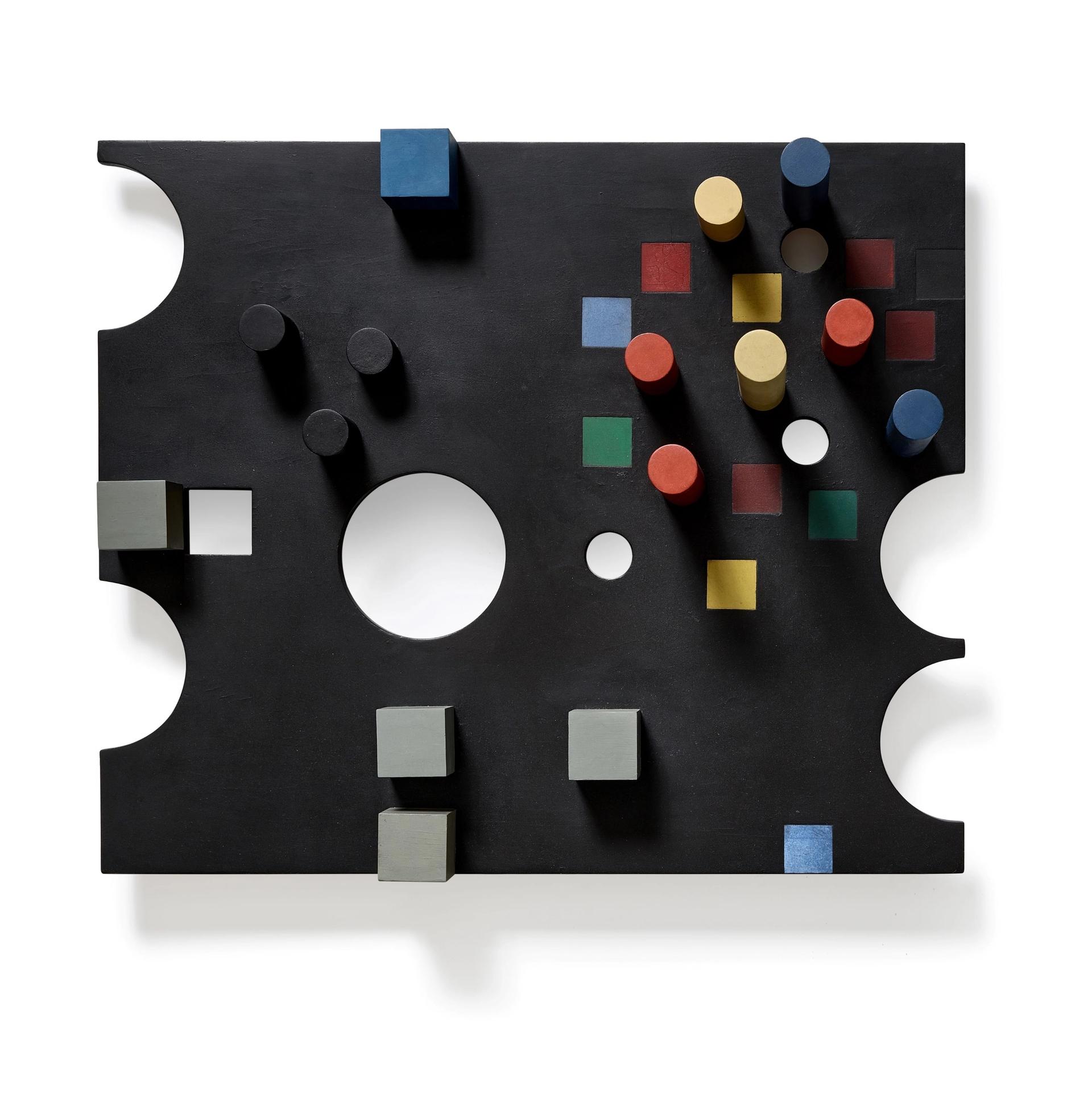
Sophie Taeuber-Arp, Relief rectangulaire, cercles découpés, carrés peints et découpés, cubes et cylindres surgissants (1938)
Courtesy Sotheby's
A strong early run and impressive Impressionists
The evening took off with two lots in the same radical vein. First, Sophie Taeuber-Arp’s abstract painted wood relief from 1938 sold at its $700,000 high estimate ($889,000 with fees), before László Moholy-Nagy’s CH for R1, Space Modulator, Scene from My Lightplay (1942), executed in oil and incising on red Formica, brought $1.8m ($2.2m with fees), close to double its $1m high target. Both lots came to market backed by in-house and third-party guarantees (with the latter also known as irrevocable bids—or simply IBs, to those in the trade).
The next two lots hailed from more familiar territory. Alexander Calder’s massive, 60-by-300in mobile Blue Moon (1962), which was installed overhead in the packed salesroom, hammered above estimate at $12.2m ($14.4m with fees). Mark Rothko’s untitled and darkly hued abstraction in oil on paper from 1969 followed, realising $9.5m ($11.3m with fees), slightly below its $10m low estimate; it last sold at Christie’s in London in June 2004 for a hammer price of £820,000.
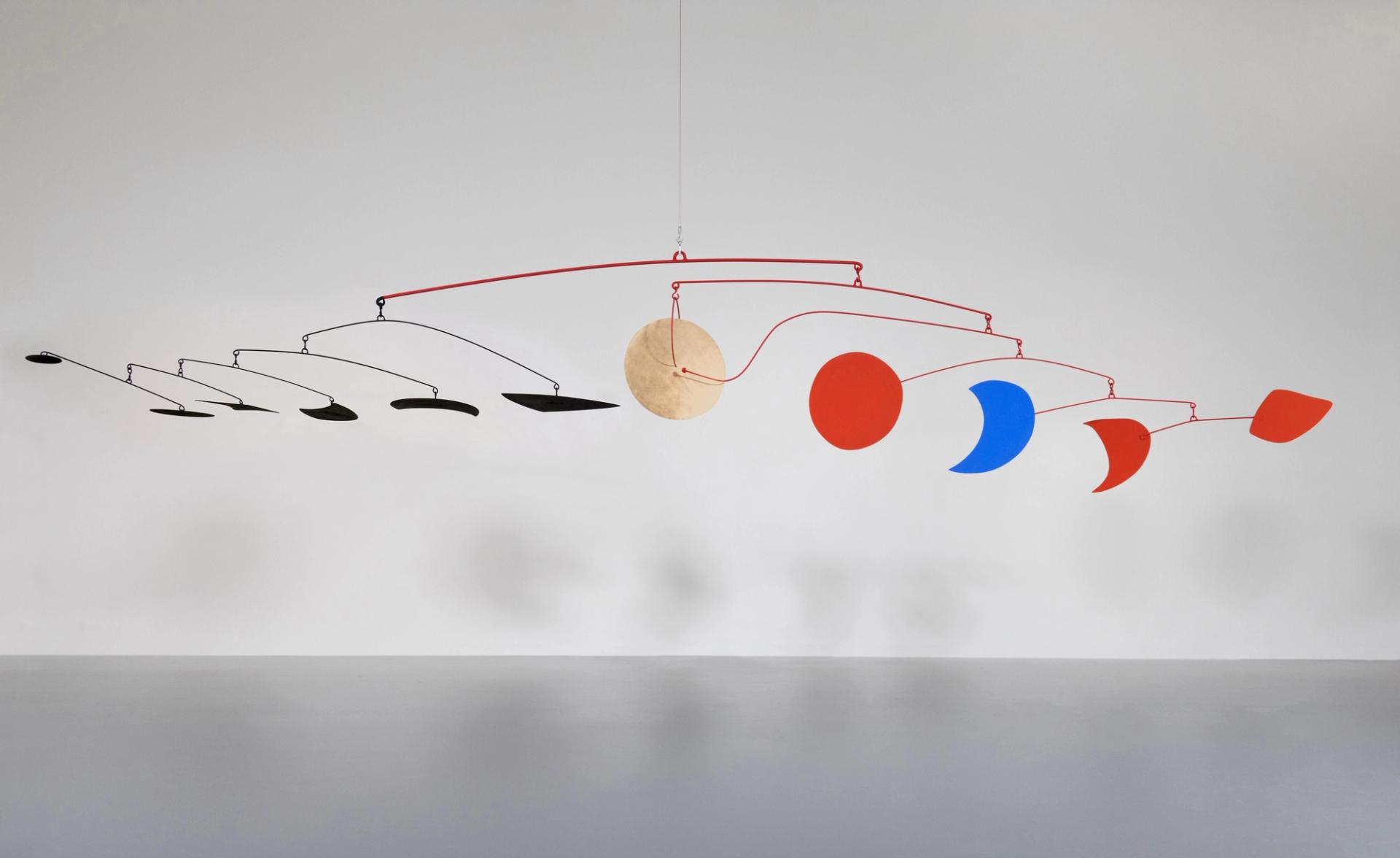
Alexander Calder, Blue Moon (1962)
Courtesy Sotheby's
Stuart Davis’s jaunty and widely exhibited painting New York-Paris No. 3 (1931), replete with crisply executed images of cafés, high-rises and street signs, closed the opening quintet of lots. It sold to the New York art adviser Nancy Rosen for $3m ($3.7m with fees), falling just shy of its presale estimate of $4m to $6m.
Several important lots soon escorted the sale back to Impressionist-era territory—and good timing, in that 2024 marks the 150th anniversary of the movement that started in Paris with 31 artists staging their own art fair. Prime among these was Claude Monet’s magnificent and formidable Meules à Giverny (1893), with the conical, centrefold grainstack seemingly floating in a sun-drenched field bordered by a copse of trees. The picture took top lot honors after a prolonged bidding war ended at $30m ($34.8m with fees), with the winner on a telephone handled by Jen Hua, the deputy chairman of Sotheby’s Asia. It was guaranteed by Sotheby’s and carried an IB, as well as an unpublished estimate "in excess of" $30m.

Claude Monet, Meules à Giverny (1893)
Courtesy Sotheby's
The second-priciest of the four Monets in the sale, Antibes vue de la Salis, dated to 1888 and suffused with the Mediterranean light of the French Riviera and a leaning olive tree in the composition’s centre, hammered at its $12m low estimate ($14.1m with fees). It last sold at Sotheby’s in London in February 2015 for £7.7m; that earlier total rose to £8.7m with fees, or around $13.1m.
Of that same epoch, Pierre-Auguste Renoir’s seated and decidedly relaxed Portrait of d’Edmond Maître (1871), depicting a close friend of the artist, made $2.1m ($2.6m with fees). In a rare auction appearance, Édouard Manet’s tabletop close-up, Vase de fleurs, roses et lilas from 1882, realised a within-estimate $8.5m ($10.1m with fees). Again, both works were backed by Sotheby’s and an IB.
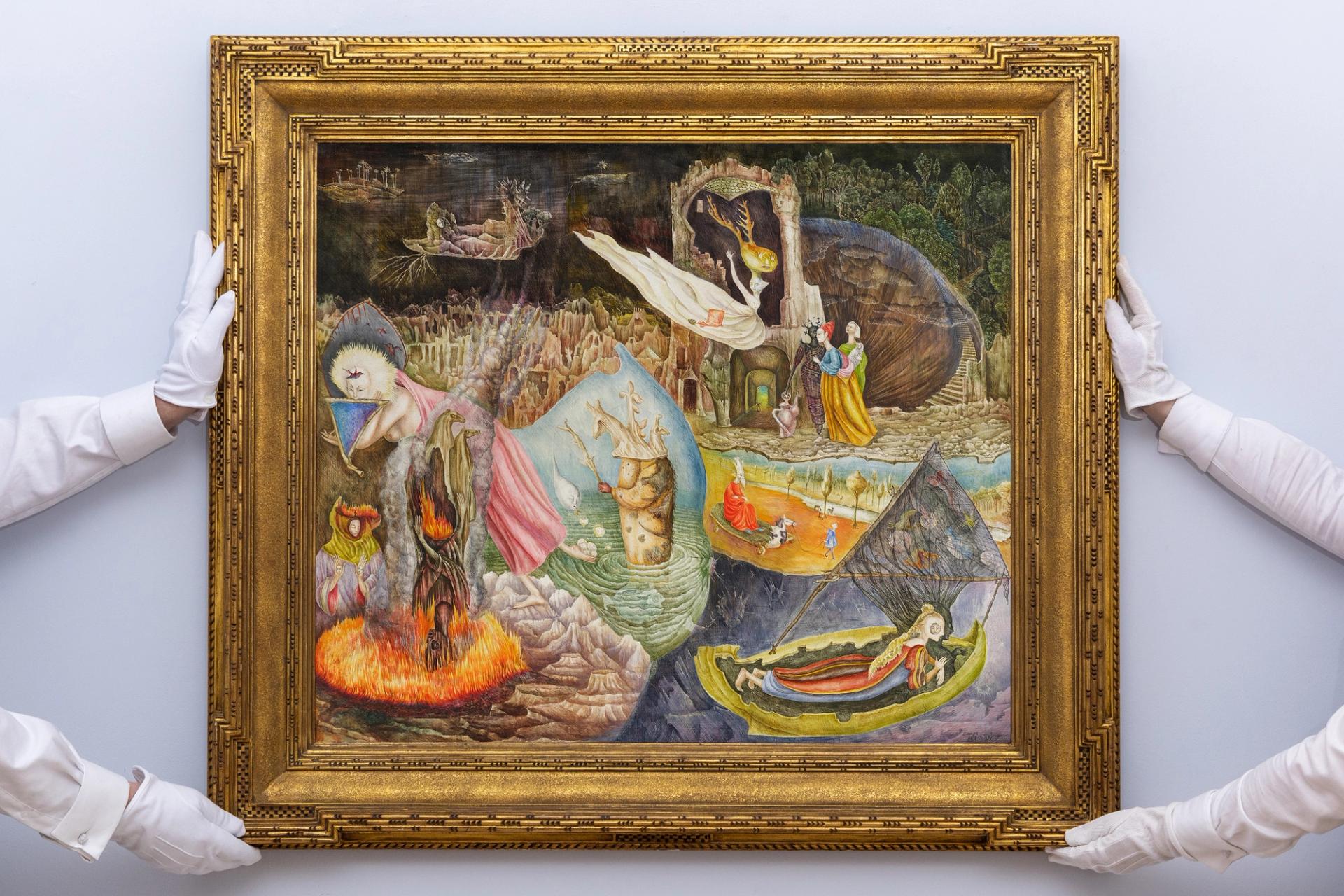
Leonora Carrington, Les Distractions de Dagobert (1945)
Courtesy of Sotheby's
Surrealism’s star turn
Surrealism played a starring role in the evening action, especially thanks to works by women artists. This was best evidenced by Carrington’s Les Distractions de Dagobert. Painted in tempera on Masonite, the hallucinatory, dreamlike work fetched a record $24.5m ($28.5m with fees), more than double its $12m low estimate.
Eduardo F. Constantini, the founder of the Museo de Arte Latinoamericano de Buenos Aires (Malba), won the lot by outdueling a plethora of telephone underbidders from his seat near the front of the salesroom. After the hammer came down, the room erupted in gleeful applause.
First exhibited at the Pierre Matisse Gallery in New York in 1948, the minutely detailed painting bears imagery that floats between the occult and the mists of ancient myths. It last sold at Sotheby’s in New York in November 1995—but in a Latin American Art auction for a then-estimate-busting $475,000 with fees, showing just how much times have changed.
“I was the underbidder 30 years ago when it last sold here,” Constantini told The Art Newspaper as he exited the salesroom. It goes to show that collecting can be a long and winding journey.
A second Carrington painting, titled Who art thou, White Face? (1959) and featuring a winged and horned horse creature, brought a within-estimate $2m ($2.5m with fees). Three lots earlier, Remedios Varo’s startling 1960 composition Esquiador (Viajero), populated by a pair of encapsulated owls guarding a fur-coated figure in a snow-dusted forest, more than doubled its $1.5m high expectation, rising to $3.4m ($4.2m with fees).
Rounding out the offerings of work by women Surrealists, Leonor Fini’s ghostly composition Le Train (1975)—centred on two seated female rail passengers in profile, each attired in chiffon dresses—brought $350,000 ($444,500 with fees) after a chase by four bidders that surpassed the high estimate. The painting last sold at Tajan Paris in March 2013 for €75,000 with fees.
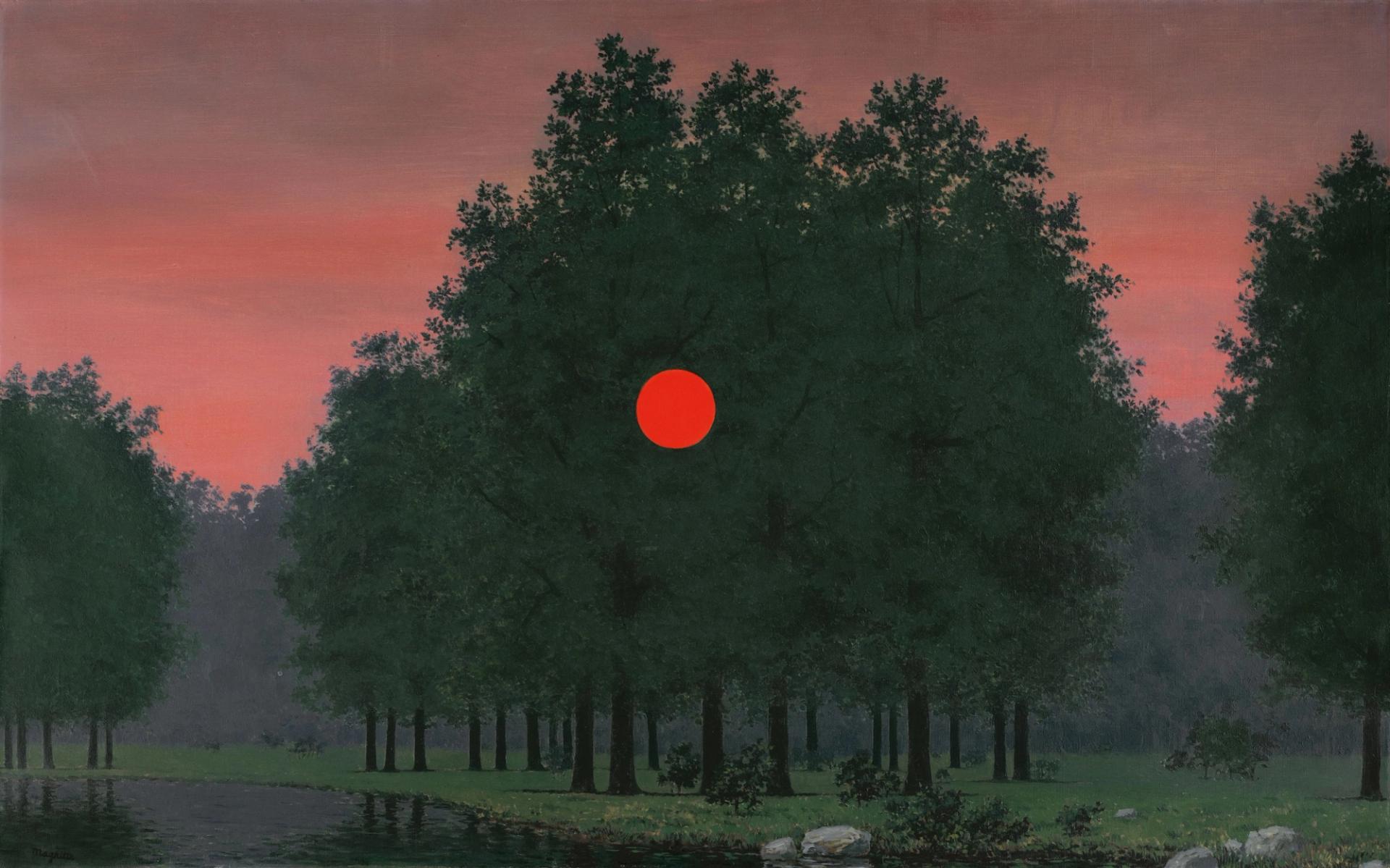
Rene Magritte, Le Banquet (around 1955-57)
Courtesy Sotheby's
In more familiar Surrealist territory, three works by René Magritte performed well. La Main heureuse (1953), picturing a diamond ring wedded to a grand piano onstage, hammered at its low estimate of $3.5m ($4m with fees). The prior lot, a postcard-sized 1952 gouache of the same subject with the same title, went for $1m ($1.3m with fees), midway through its expected range.
On a larger scale, Magritte’s Le Banquet (around 1955-57), dominated by a setting orange-red sun placed in front of a forest glade, sold just above its $15m low estimate, fetching $15.5m ($18.1m with fees). It last sold at Sotheby’s New York in November 2017 for a hammer price of $12m. Each of the three Magritte lots came backed by a house guarantee and an IB.
Euro-American classics
Of the evening’s half-dozen Picasso offerings, the earliest-dated may have been the luckiest. Courses de taureaux (1901), which captures one of the artist’s beloved bullfight arena scenes, fell far short of its $5m low estimate but nonetheless sold for $3.1m ($3.5m with fees). His Buste d’homme, from October 1969, fared much better. The painting, centred on a seated figure wearing a wide-brimmed hat and almost certainly created as a kind of late self-portrait (if not self-canonisation), realised $10.8m ($12.7m with fees) against an estimate range of $8m to $12m. It was included in the artist’s now-seminal solo exhibition at the Palais des Papes in Avignon in 1969-70.
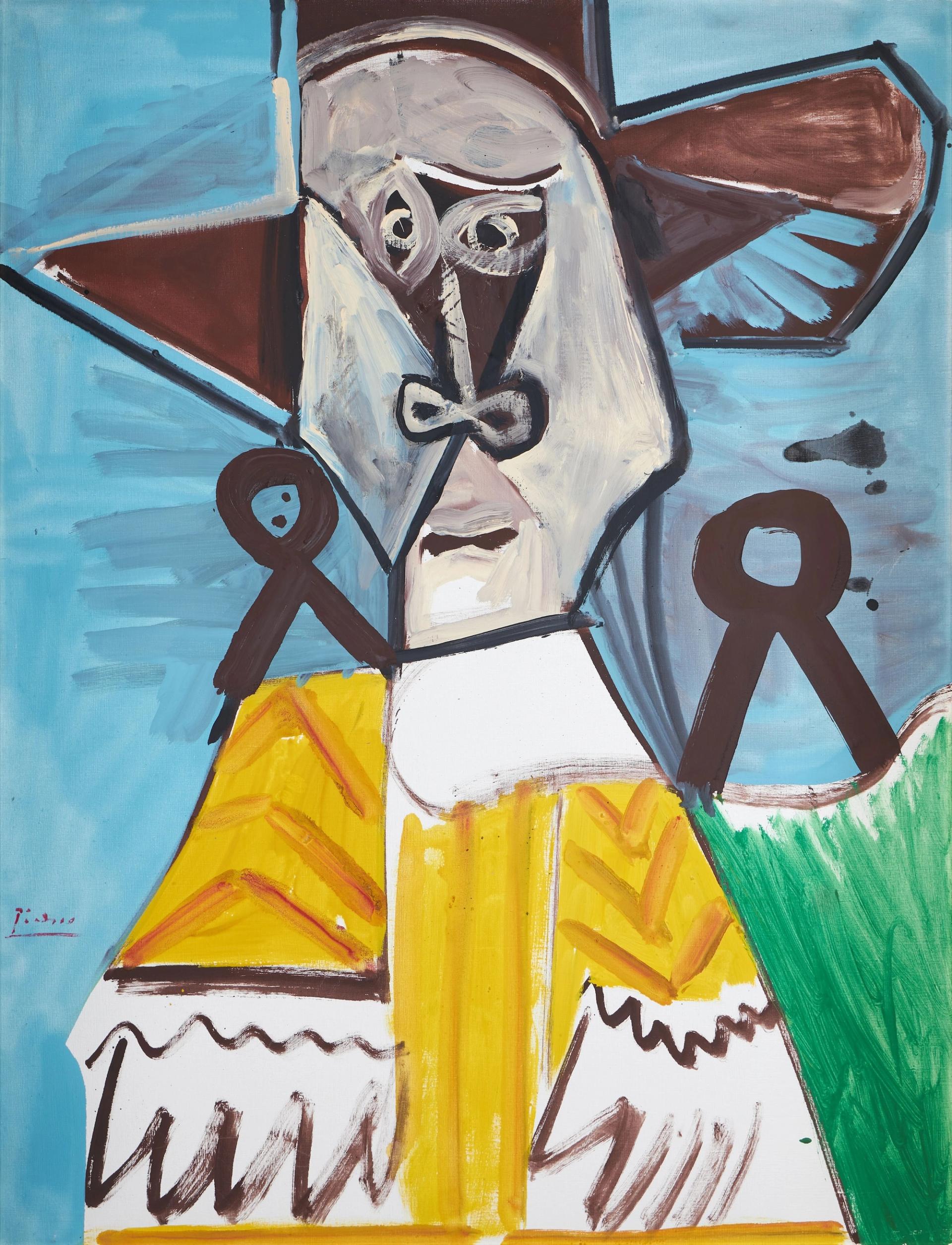
Pablo Picasso, Buste d'homme (1969)
Courtesy Sotheby's
Though seemingly somewhat out of place in the European-dominated line-up, the American artist Andrew Wyeth’s lonely canvas Rum Runner (To the Westward), created in 1944 and reworked by the artist in 1974, made headway off the Maine coast by bringing $2.8m ($3.4m with fees)—though it docked short of its $3m low expectation.
Still on these shores, Hans Hofmann’s large-scale abstraction Lava (1960) hammered at its $3m low estimate ($3.7m with fees). The painting last sold at auction at Christie’s New York in November 2017 for a torrid and still-record $8.8m with fees, the same storied evening that Leonardo’s Salvator Mundi became the most expensive work of art sold at auction by hitting $450.3m with fees.
Just about any way you view the Modern evening auction—by early lots or later lots, female or male Surrealists, European or American Modernists—Sotheby’s pulled off a surprising and rather remarkable sale tonight. Time will tell if Christie’s can follow suit when the action resumes Thursday (16 May) for its 20th- century art evening sale at Rockefeller Center.


